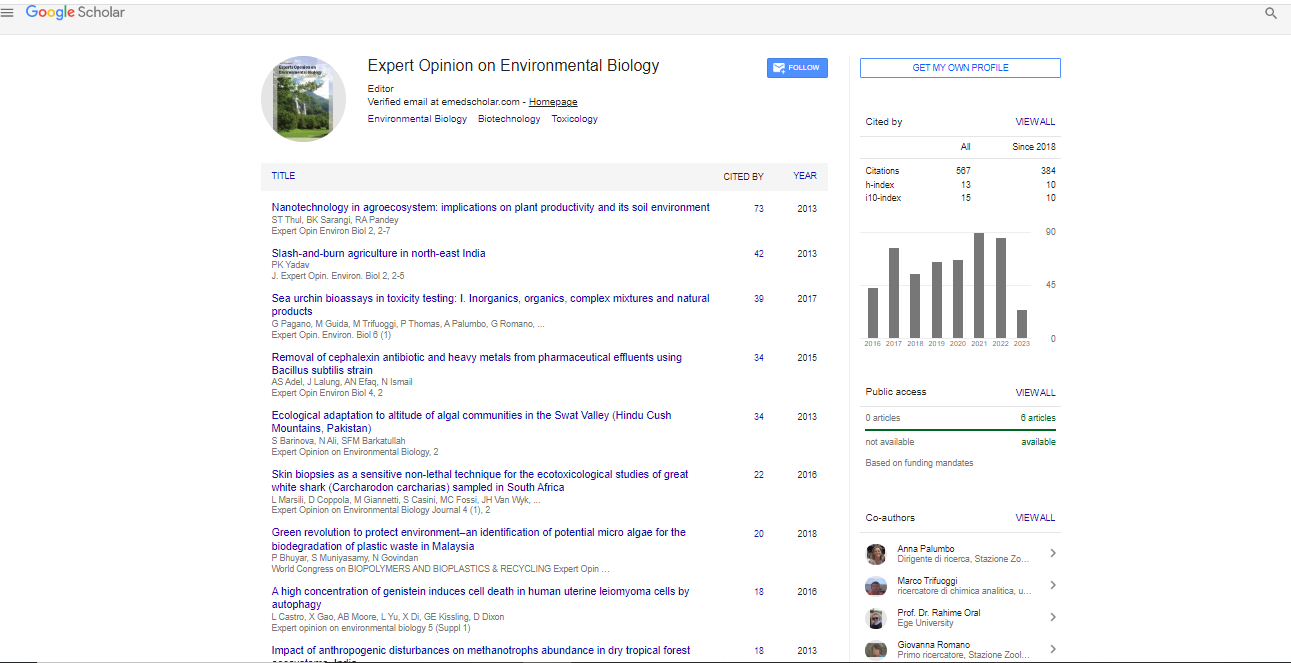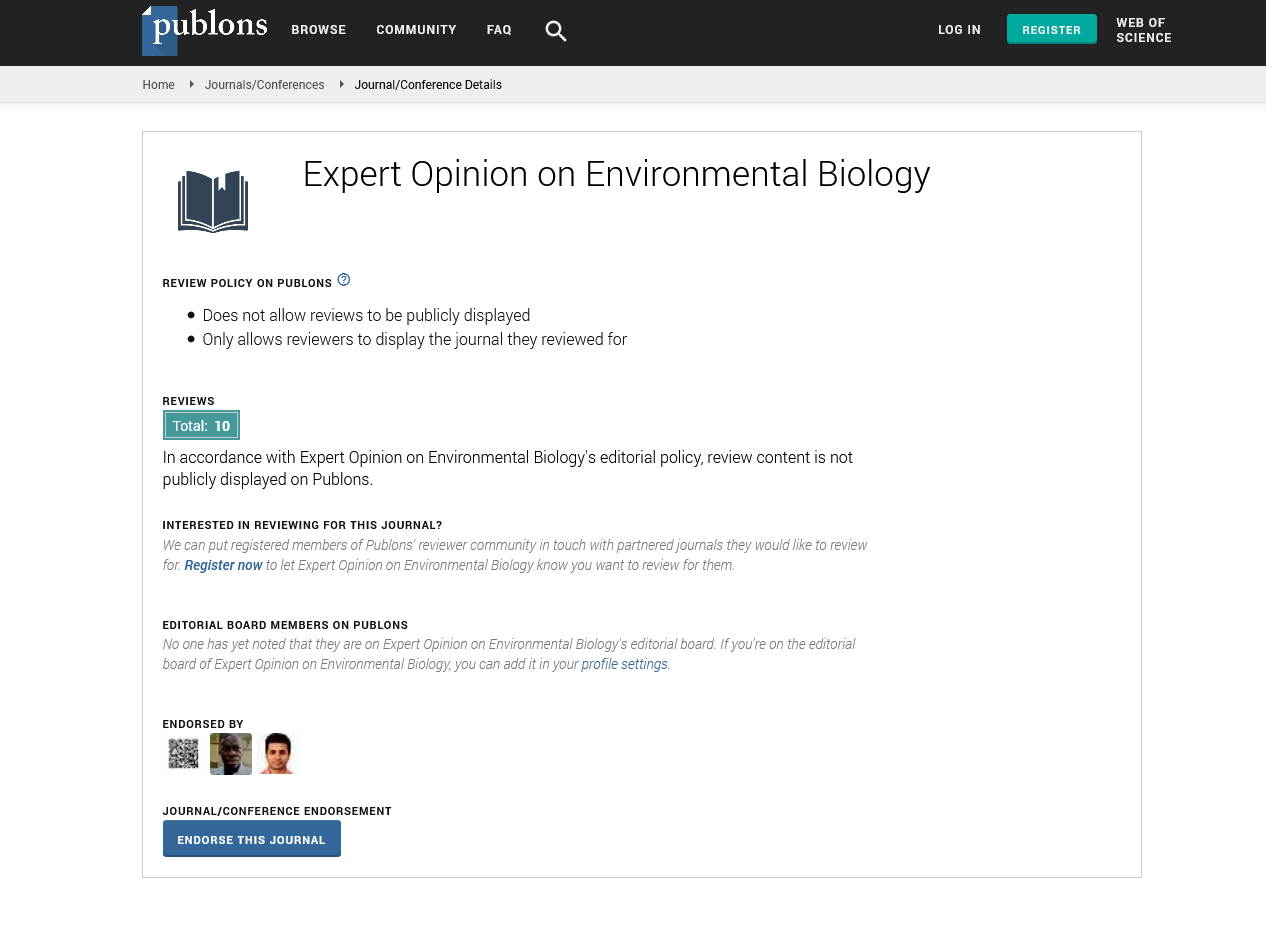Life Agrised: Co-composting for environmental recycling of co-dredged sediment and green waste
Cristina Macci, Francesca Vannucchi, Serena Doni, Eleonora Peruzzi, Stefano Lucchetti and Grazia Masciandaro
CNR-IRET, Italy
: Expert Opin Environ Biol
Abstract
In Europe, 1 and 13 million tons of dredged river sediments and wood pruning residues, respectively, are annually produced and only a part of them is recycled. Composting could be an effective and low-cost technique to turn the sediment from a valueless waste into a valuable raw material, suitable for different environmental applications. The LIFE AGRISED project (LIFE17 ENV/IT/000269) aimed to assess a new technology based on the recycling of dredged sediments though the co-composting with green wastes, to produce a substrate for nursery sector and reconstituted soil (technosol) for degraded soil rehabilitation. The composting process was carried out in Czech Republic and Italy for 8 and 6 months, respectively, using brackish sediments (S) and green waste (GW) biomass (grass, corn cob, wood chips, wood and dry leaves) at the following ratios (w:w) 3S:1GW, 1S:1GW, and 1S:3GW. The co-composting process was monitored in terms of temperature, humidity, bulk density, organic matter, nutrients, microbial activity, and pollutants. The stability and maturity of all co-composts was reached through the decrease and stabilization of organic matter content, electrical conductivity, microbial activity, and increase in humification rate. The co-composts together with sediments and sludges were used in chemical-mechanical treatment for degraded soil reconstruction; the technosol trials are ongoing. The co-composts were also used as component for growing media in nursery and compared with the traditional substrate, containing peatmoss and pumice. All tested substrates had physical and chemical properties suitable for plant growth, for Italian legislation (D. Lgs. 75/2010); and the suitability of tested substrates was confirmed by plant growth experiment. In conclusion, these preliminary results suggested the suitability of sediments to be composted with green wastes and the possibility to reuse the obtained cocomposts both in nursery and soil reconstitution sector.
Recent Publications:
1. Cesaro A, Belgiorno V, Guida M (2015) Compost from organic solid waste: Quality assessment and European regulations for its sustainable use. Resources, Conservation and Recycling 94: 72-79.
2. Directive 2008/98/EC of the European Parliament and of the Council of 19 November 2008 on waste and repealing certain Directives
3. Onwosi CO, Igbokwe VC, Odimba JN, Eke IE, Nwankwoala MO, Iroh IN, Ezeogu LI (2017) Composting technology in waste stabilization: on the methods, challenges and future prospects. Journal of Environmental Management 190: 140-157.
4. Renella G (2021) Recycling and Reuse of Sediments in Agriculture: Where Is the Problem? Sustainability 13(4): 1648
5. SedNet (2013) Contaminated Sediments in European River Basins, European Sediment Research Network. https://sednet.org/wp-content/uploads/2016/03/Sednet_booklet_final_2.pdf
Biography
Cristina Macci has her expertise mainly in 1) conservation and improvement in soil fertility and health 2) Nature based solutions (phytoremediation, landfarming, co-composting) for the treatment and valorization of different environmental matrices included sediments to be reuse mainly in agronomic/nursery/horticulture fields in the circular economy perspective. An in-depth monitoring approach based on physical, chemical, chemical-structural, biochemical parameters is applied to follow the evolution of the recovery processes of the quality of soil and other environmental matrices
 Spanish
Spanish  Chinese
Chinese  Russian
Russian  German
German  French
French  Japanese
Japanese  Portuguese
Portuguese  Hindi
Hindi 
